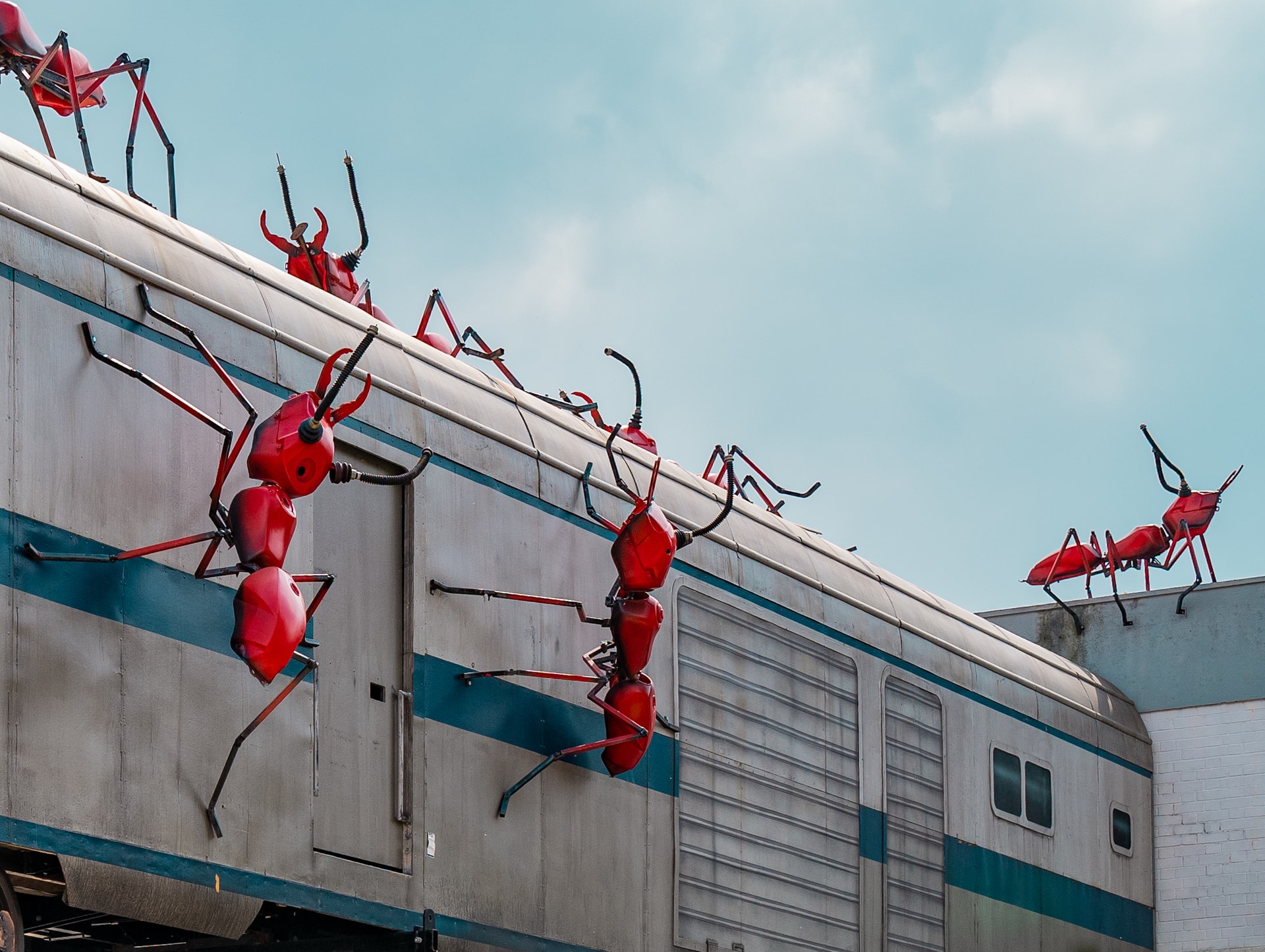Why would anyone let a pack of baby-eaters move in with their family? These ants have their reasons.
Trying something new with a podcast, but you can read the full transcript below if you hate David Attenborough impressions.
Invasion of the Baby-Eaters
Full Transcript
Off on the hillsides of Peru is a bustling mushroom-farming community. They live happily until one day, when a group of strangers rolls into town… moving into the houses of the locals, they raid the pantries, eating not only the mushrooms, but also occasionally snacking on the townspeople’s children. The townspeople, completely unphased, continue on with their lives as if nothing has happened. Ah, isn’t life beautiful?
[record scratch]
Wait what?
Believe it or not, this is actually the social structure of some ant colonies in South America: the fungi-farming ant species Sericomyrmex amabilis is often parasitized by Megalomyrmex symmetochus, a species that sets up a whole colony within the farmers’ already existing nest. Taking food as well as eating eggs and pupae from the nest, the two species act as roommates, with the invaders cast as the ultimate freeloaders. What’s surprising is that experiments comparing Sericomyrmex colonies show that these farming ants actually enable the freeloaders! Let’s take a closer look.
It turns out that if you give these farming ants the choice between high-protein food or high sugar food to bring back to the nest, those that share their nest with freeloaders will bring back a lot of the protein-rich food, while those that live alone will bring back a smaller amount of sugary food. This is interesting because it’s the freeloaders, not the farmers, that prefer protein-rich food — these guys are actually catering to the baby-eaters’ needs instead of their own! While this seems a little backwards at first glance, it may actually be beneficial: providing good food means that the freeloaders are less likely to turn to eating babies to fill their stomachs. If bringing back some extra food to your roommate means that they hold off on eating your kid, it’s probably worth it.
So the farmers are doing their own form of damage control, but ants living with freeloaders have less food and less brood stored up within their nest than those that are living alone. Clearly the farmers are still at a disadvantage — why don’t they do something more? Why don’t they just grab their pitchforks and fight back? Well, the nose knows.
Ants can generally tell friends from foes by how they smell — something that’s determined by the chemicals on the outside of their bodies. By testing the Megalomyrmex freeloaders, it was found that these ants have a very distinct aroma… one of toxic venom. The story about the farmers just letting the freeloaders invade their town makes a lot more sense when the freeloaders are holding guns and all the farmers have are pitchforks. Not only is it safer to give up a little food and a few eggs than it is to fight these dangerous invaders, but the freeloaders aren’t the only danger to the nest. If the nest is attacked after the freeloaders have moved in, say by another group of ants coming to steal food, that toxic venom will come in handy. While they’re too lazy to go collect their own food, researchers suspect that the freeloaders will probably get up off the couch if their home is in danger.
So overall, while the Megalomyrmex invaders are definitely in the wrong for freeloading off of the Sericomyrmex farmers, there is a little bit of repayment going on: the farmers have to collect more food to try and avoid having their babies eaten, but it’s better than being dead — whether that be due to fighting (and losing) the invaders themselves or due to not being able to hold their own against other threats without the help of toxic venom.
This story perfectly demonstrates how strange and unintuitive interspecies relationships can seem until we take a closer look.
Resources and further reading:

